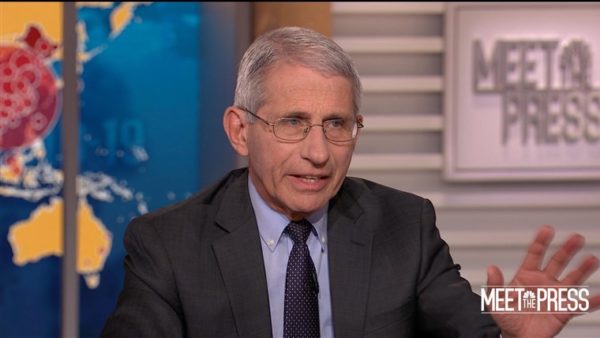Advertisement
On Politics With Lisa Lerer
You’re either a liberal snowflake controlled by big government or a greedy conservative willing to sacrifice Grandma for the economy. It took less than two months for Americans to get here.

Sign up here to get On Politics in your inbox every weekday.
Wear a mask? You’re a liberal snowflake controlled by big government. Want to reopen restaurants? You’re a greedy conservative willing to sacrifice Grandma for the economy.
It took less than two months for the coronavirus pandemic to become just the latest battle in the culture wars.
With the country still in the firm grip of the coronavirus pandemic, conservatives are on social media and Fox News stoking protests that argue masks, stay-at-home orders and social distancing violate constitutional rights and are causing unacceptable harm to the economy.
Take a look at what two governors — one from a reliably Republican state and another from a reliably Democratic state — said this week.
“We have a public health crisis in this country, there’s no doubt about it,” Gov. Tate Reeves of Mississippi said in an appearance on “Fox News Sunday.” “But we also have an economic crisis.”
“We have turned the corner and we are on the decline,” Gov. Andrew M. Cuomo said, citing an article showing that the death rate has fallen by half in New York City, in his daily briefing on Wednesday. “To me, that vindicates what we are doing here in New York, which says: Follow the science, follow the data, put the politics aside and the emotion aside. What we’re doing here shows results.”
The problem with all these politics? Epidemiology.
So far, the virus has hit Democratic states the hardest, with the most cases per capita in five deeply Democratic states — New York, New Jersey, Massachusetts, California and Illinois. Cities have borne the brunt of the caseload. And African-Americans and Latinos — a key part of the Democratic coalition — are getting sick and dying of the virus at higher rates.
But anyone who believes this virus is fading away — or somehow contained to urban areas — is engaging in some serious magical thinking.
A New York Times analysis found that 18 of the states that are reopening had an increase of daily average cases over the last two weeks. Fifteen of those states are led by Republican governors.
Three of the top five states where the virus is spreading the fastest — Texas, Georgia and Ohio — have Republican governors and Republican-controlled legislatures. All three have moved toward reopening.
In the Midwest and South, smaller towns and more rural areas have suddenly been hit hard as the virus tears through nursing homes, meatpacking plants and prisons.
In the Trump era, rural counties like Trousdale have represented the backbone of the Republican base. In Trousdale, nearly 67 percent of the county supported President Trump in 2016. Over all, the average margin of victory in rural counties won by Republicans was nearly 47 percent in 2016.
Rural areas tend to be older and have a larger share of the population with pre-existing medical conditions, making them far more vulnerable to the worst health effects of the virus.
Republican governors and conservative activists may think the coronavirus is an urban problem. Or a density problem. Or, quite frankly, a Democratic problem.
They may soon find out that it’s not.
Drop us a line!

We want to hear from our readers. Have a question? We’ll try to answer it. Have a comment? We’re all ears. Email us at onpolitics@nytimes.com.
Despite sexual assault allegations leveled against Joe Biden by his former Senate aide Tara Reade, the former vice president has remained the presumptive Democratic presidential nominee. As we head toward the November election, our columnists and contributors have been debating the political and moral significance of Ms. Reade’s story.
In the absence of certainty, the Times columnist Bret Stephens cautions rushing to judgment, and advised “fairness toward the accused.” The Times editorial board also noted that “as is so often the case in such situations, it is all but impossible to be certain of the truth.”
But the contributor Linda Hirshman said she would “suck it up and make the utilitarian bargain.” “I believe Ms. Reade, and I’ll vote for Mr. Biden this fall,” she wrote. While Elizabeth Bruenig, a writer for Opinion, urged Democrats to “consider a Plan B.” Ms. Hirshman highlights the potential risks of pivoting this late in the game: “All major Democratic Party figures have indicated they’re not budging on the presumptive nominee, and the transaction costs of replacing him would be suicidal. Barring some miracle, it’s going to be Mr. Biden.”
What could that choice mean for the #MeToo movement? The Times columnist Michelle Goldberg argued that its credibility would suffer. “The original #MeToo stories were carefully and meticulously documented,” she wrote. “Now it threatens to become a way to handicap one political faction in the middle of a partisan free-for-all.”
— Adam Rubenstein
This Twitter war seems like a really great use of the Treasury Secretary’s time right now.
Were you forwarded this newsletter? Sign up here to get it delivered to your inbox.
Thanks for reading. On Politics is your guide to the political news cycle, delivering clarity from the chaos.
Is there anything you think we’re missing? Anything you want to see more of? We’d love to hear from you. Email us at onpolitics@nytimes.com.



